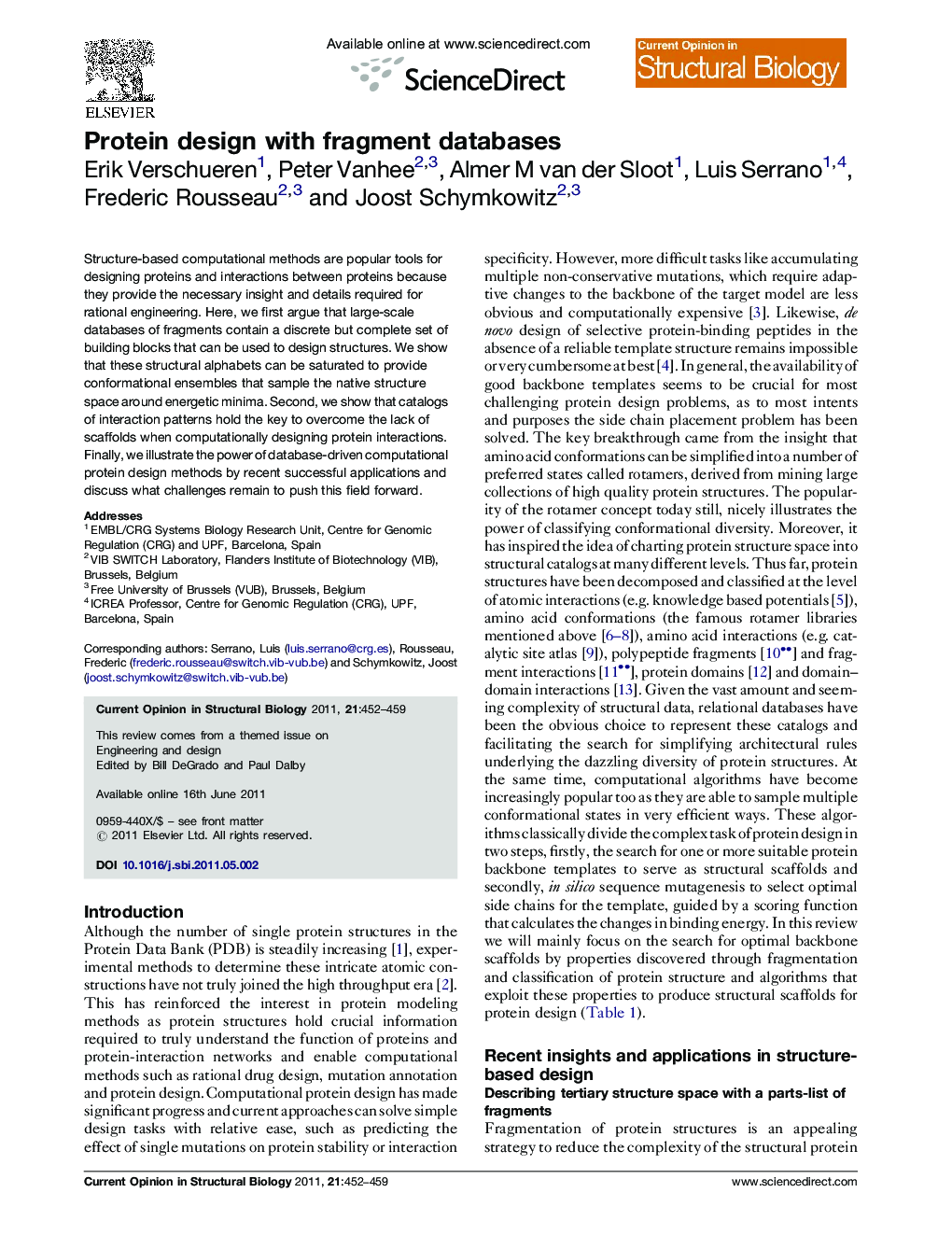| Article ID | Journal | Published Year | Pages | File Type |
|---|---|---|---|---|
| 1979325 | Current Opinion in Structural Biology | 2011 | 8 Pages |
Structure-based computational methods are popular tools for designing proteins and interactions between proteins because they provide the necessary insight and details required for rational engineering. Here, we first argue that large-scale databases of fragments contain a discrete but complete set of building blocks that can be used to design structures. We show that these structural alphabets can be saturated to provide conformational ensembles that sample the native structure space around energetic minima. Second, we show that catalogs of interaction patterns hold the key to overcome the lack of scaffolds when computationally designing protein interactions. Finally, we illustrate the power of database-driven computational protein design methods by recent successful applications and discuss what challenges remain to push this field forward.
► Casting protein structures in fragment libraries reveals structural symmetries. ► Current databases cover the known variation in regular secondary structure. ► Exhaustive protein fragment libraries can produce conformational backbone ensembles. ► We describe interactions between polypeptide fragments as recurrent patterns. ► Intramolecular protein architectures can serve as protein-interaction scaffolds.
